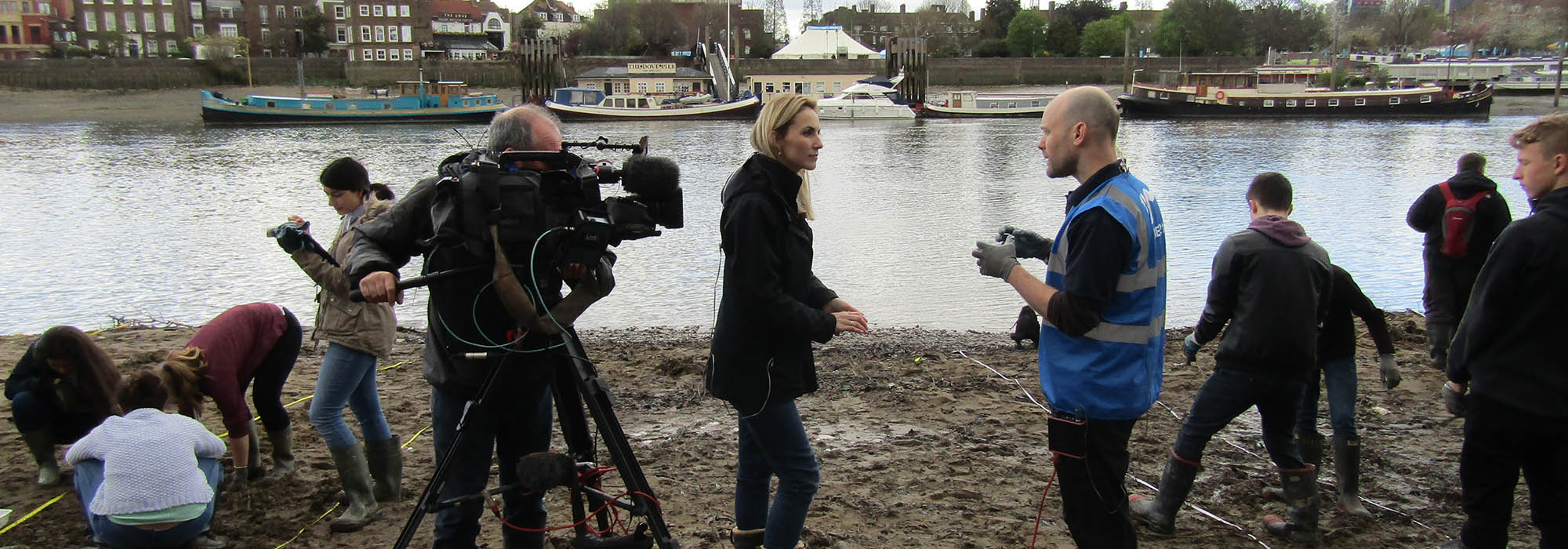Milestone Exceeded in Restoring London’s Rivers
London, UK – 02 June 2016: The capital’s ‘blue corridors’ have benefited from extensive river restoration, which far exceeds the London Plan’s target to restore 15km of London rivers by 2015. Thanks to the fieldwork from a number of organisations who are part of the London Rivers Restoration Group, more than 17.5km of river across all of the city’s catchments has been restored to a more natural setting.
Recent figures from the Environment Agency show that the total amount of river restored across the capital is 17,742 metres since the London Plan target was set in 2008. The restoration was delivered through urban regeneration projects, catchment partnerships and Environment Agency flood risk schemes and involved removing weirs, breaking out concrete channels, naturalising river banks and daylighting or exposing buried rivers.
A section of the River Wandle in Croydon was re-diverted from underground to instead flow through the community space of Wandle Park. This restoration proved popular within the community for enhancing the park’s atmosphere and this particular restoration joins a number of others which are now reducing flow and improving the environment for wildlife as well as people across London.
The London Rivers Restoration Group is part of the Catchment Partnerships in London Group hosted by river environment charity, Thames21.
Debbie Leach, Chief Executive of Thames21, said: “We believe in putting healthy rivers back at the heart of community life because they provide massive benefits for community cohesion and well-being and river restorations are vital in reconnecting people with their local river.”
A few years earlier in Lewisham, the community campaigned for the re-naturalisation of the River Ravensbourne through the ‘formerly featureless green space’ of Ladywell Fields. By creating a second river channel for the water to flow through the centre of the park and establishing an easy-to-access wildlife area, this park is now a flourishing riverside haven for both people and nature. The river restorations are improving wildlife habitats, reducing crime and increasing the use and enjoyment of the river corridor and open space.
Tony Rich, Chairman of Ladywell Fields User Group, said: “Ladywell Fields has been transformed thanks to the restoration of the river. As a regular user of the park, I’ve noticed how the restorations are benefiting the community. The park is now an accessible resource for local families to enjoy and is greatly increasing the number of people using this picturesque open space; both of which are vital for improving our communities.”
Chris Hazelton, Environment Manager from the Environment Agency, added: “The river restoration schemes across London have played an important part in transforming London’s open spaces; improving the environment for wildlife and people, and managing the flood risk. I look forward to see the completion of more schemes like this in the near future across other part of London.”
Meeting this target only bolsters the case laid out in the Green Alliance’s Greener London Report, which proposes for the next London’s Mayor to commit to restoring 50km of the capital’s rivers by 2020. www.green-alliance.org.uk/Greener_London.php
To celebrate the ‘blue corridors’ of the capital, Thames21 and the London Rivers Restoration Group is launching the first ever London Rivers Week later this month. This week-long event will see opportunities for Londoners to take part in river walks throughout the capital, guided by local experts. Final campaign details will be released nearer the time, however a webpage is now live: www.thames21.org.uk/londonriversweek2016
ENDS
Notes to editor
About the London Rivers Restoration Group
London Rivers Restoration Group is a sub-group of the Catchment Partnerships in London (CPiL) Group. The purpose of London River Restoration Group is to promote and report on the delivery of river restoration and enhancement projects in support of the Catchment-based Approach to delivering Water Framework Directive objectives across London.
Its specific objective is to achieve the following aspirations set out in the London Rivers Action Plan (LRAP):
- Improve flood management using more natural processes
- Reduce the likely negative impacts of climate change
- Reconnect people to the natural environment through urban regeneration
- Gain better access for recreation and improved well-being
- Enhance habitats for wildlife
The London Rivers Restoration Group includes the Environment Agency, Thames21, the Greater London Authority, the Wandle Trust, London Wildlife Trust, Green Corridor, the Thames Estuary Partnership and the River Restoration Centre.
About the Catchment Partnerships in London (CPiL) Group
The purpose of the Catchment Partnerships in London (CPiL) is to support 12 different Catchment Partnerships within Greater London to share lessons, experiences, best practice and help achieve a coordinated approach to delivering the objectives of the Water Framework Directive.
CPiL is not a Steering Group for the Catchment Partnerships; instead it supports and facilitates shared action, decision making and communication for the Catchment-based Approach in London.
Catchment Partnerships are groups of organisations working in different geographical locations to improve water quality.
Participating Partnerships:
- The Brent Catchment Partnership
- River Colne Catchment Action Network
- The Crane Valley Partnership
- Cray & Darent Catchment Improvement Group
- Hogsmill & Beverley Brook Catchment
- Ravensbourne Catchment Improvement Group
- Roding Beam & Ingrebourne Catchment Partnership
- Thamesmead & Marsh Dykes Catchment Group
- The London Lee Catchment Partnership
- Thamesmead & Marsh Dykes Catchment Group
- The Lower Thames (Maidenhead to Teddington) Catchment Partnership
- River Wandle Community Catchment Plan
- Your Tidal Thames Catchment Partnership
Participating Organisations:
- Environment Agency
- Greater London Authority
- Groundwork
- London Wildlife Trust
- NW Kent Countryside Partnership
- The Rivers Trust
- South East Rivers Trust
- Thames21
- Thames Chase
- Thames Estuary Partnership
- Thames Landscape Strategy
- Thames Strategy Kew to Chelsea
- The Wandle Trust
- Zoological Society of London
About the Water Framework Directive
Catchment Partnerships came about in response to the 2000 European Union Water Framework Directive, which legally obliges all member states to achieve good ecological and chemical status of all their water bodies.
Click here for more information about the EU Water Framework Directive.
